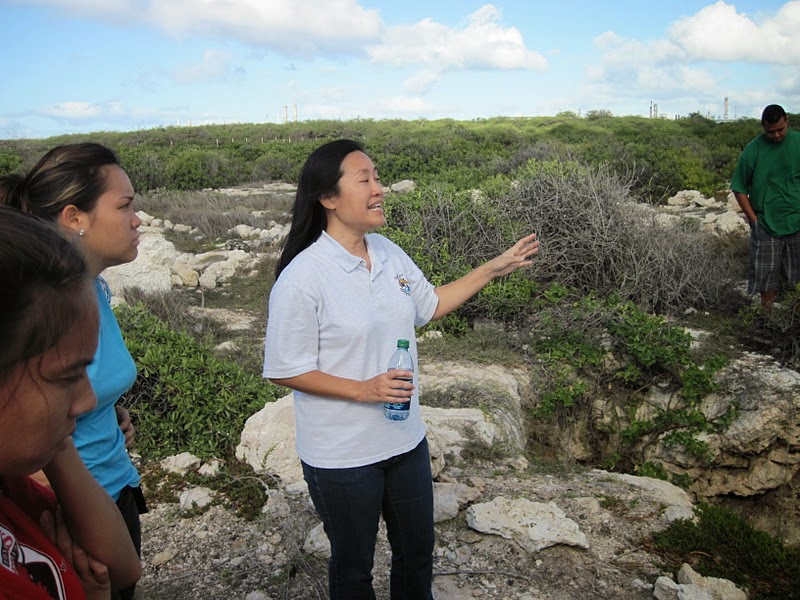Ewa Plain Karst: A Precise Cut Into The Karst For An Amazing View Back In Time
by John Bond, Kanehili Hui
A drainage canal on the Ewa Plain tells an interesting story about pre-history
and early native Hawaiian karst culture. This area is all ancient limestone reef.
It was at one time many thousands of years ago an ocean reef teeming with
fish and many types of coral. When the sea level dropped, acidic rain water
began dissolving the calcium carbonate forming sinkholes and caves.
It was at one time many thousands of years ago an ocean reef teeming with
fish and many types of coral. When the sea level dropped, acidic rain water
began dissolving the calcium carbonate forming sinkholes and caves.
When this cutting work was done is not known at this time, but possibly 1960's.
A quarry cutting saw was likely used - an amazing slice into the ancient Ewa reef
A smooth water "pipe" feature like this indicates a long period of acidic rain water flow
Several types of karst sinkhole and cave features can be seen in one place
More variations in how rain water and time eroded through the reef after sea level fell
The tunnels and channels through the ancient reef vary greatly based on coral species
This actually looks like it could have been a native habitation and possible burial site
This was likely formed over centuries by an upland stream of water passing through
Who knows - this could have contained ancient bird bones and plant seeds long extinct
A channel like this is just a microcosm of larger channels much further down in the karst
A great cross section of a sinkhole which could lead down to a sea water cave chamber
A quarry saw was likely used to cut this drainage canal like a piece of cake.
Photos By John Bond, Kanehili Cultural Hui



















































